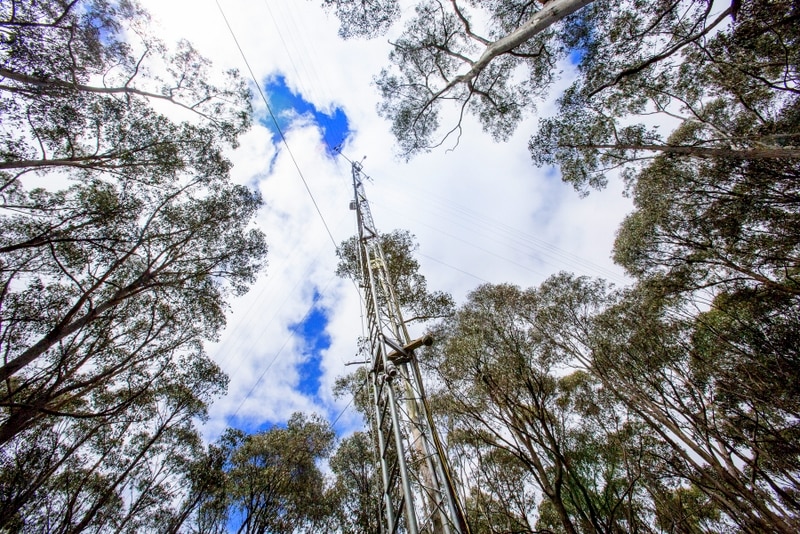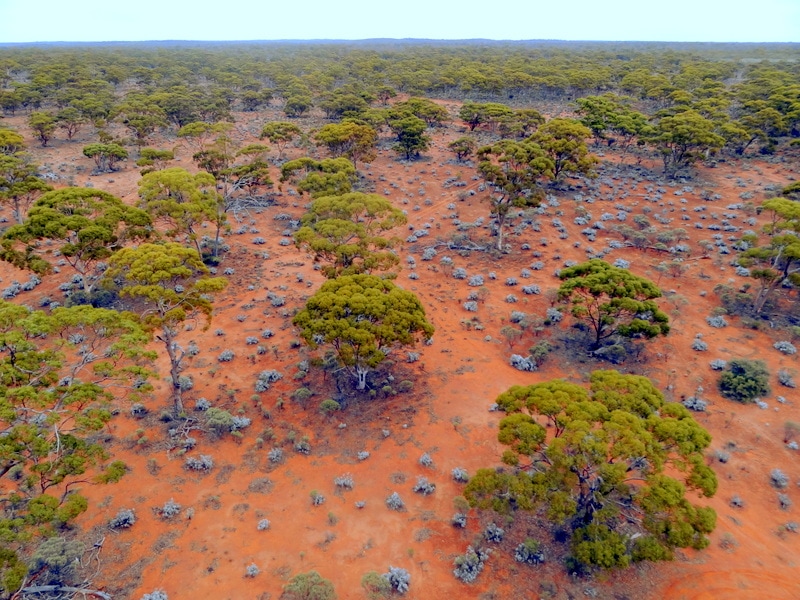As temperature records continued to tumble last summer, a timely experiment using TERN data has added to our understanding about how Australian woodlands cope with extreme heat.
Just like 2018, this year again began with extraordinary, record-breaking heat waves throughout Australia’s southern and eastern states. Thanks to TERN’s nation-wide ecosystem monitoring infrastructure, data now exist that are enabling researchers to investigate the impact that such extreme heat has on Australian ecosystems.
Recently, researchers from Western Sydney University, the ARC Centre of Excellence for Climate Extremes and other institutes showed that trees actively stop photosynthesising but keep transpiring to beat the heat during extreme events.
“Such a response is akin to humans sweating,” says lead researcher Dr Martin De Kauwe. “To get a better understanding of this physiological response at an ecosystem scale, we used data from seven TERN Ecosystem Processes monitoring sites within the global FLUXNET database.”
“Without the data from TERN, our analysis wouldn’t have been possible because the global FLUXNET data collection doesn’t sample locations in sufficiently extreme environments outside of Australia,” says Martin.

Decoupling photosynthesis and transpiration for better climate models
The research focused on both the days leading up to a temperature extreme (> 37∘C) and heatwaves, which are three or more consecutive days above 35∘C.
“In the days leading up to a heatwave, we found reduced photosynthesis and sustained or increased transpiration at seven Australian evergreen wooded flux sites,” reports Martin.
“However, in these events, our results indicate that the increasing atmospheric demand for water was also driving an increase in the transpiration rate. When we focussed on heatwaves, we were unable to conclusively disentangle the decoupling between photosynthesis and transpiration and the response of transpiration to increasing the vapour pressure deficit.”
“Now the challenge is to understand why this novel ‘leaf cooling’ response during heat extremes – that has been observed experimentally – is harder to decipher at the ecosystem scale,” Martin adds.

Current land surface models used in climate models do not have a mechanism to allow plants to maintain transpiration whilst not taking up carbon. Not accounting for this behaviour in models may mean that we underestimate both the resilience of Australian vegetation to future climate extremes, as well as any vegetation-atmosphere feedbacks.
Whilst further work is needed to translate this research into better models, Martin strongly supports Professor Andy Pitman’s judgment that Australia’s flux monitoring sites, including TERN’s, “provide perhaps the world’s most valuable observations for building and evaluating the land models needed for projecting future droughts and heatwaves.”
As heat extremes become more commonplace, understanding and predicting the response of Australia’s ecosystems and their services becomes more important. TERN is committed to supporting experimental work that is helping us plan for a hotter, more extreme future.
- Click here for more information on TERN Ecosystem Processes monitoring infrastructure, including its network of flux towers.







